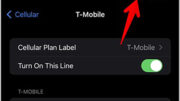I rely on my cell phone for work. I make, and take, a lot of calls. Real voice calls. There may be a time when businesses start texting each other but for now, the good old fashioned phone call is how work gets done.
Even so, about 50% of the incoming calls on my phone are robocalls. That’s probably lower than the average, since most people don’t use their phones for voice as much. If you have a land line (and, why?) chances are up to 90% of the incoming calls are either robocalls or solicitations of some sort.
Robocalling today is like spam email was a decade ago: a scourge that no one seems to know how to control.
How emails got better
E-mail spam got better because of two key changes. First, the federal government’s CAN-SPAM act set very high penalties for spammers and even for those legitimate businesses that didn’t honor opt-out requests. That really was a big help.
The other side of it was that e-mail providers like Microsoft and Google started taking spam seriously. Every major provider today keeps its own list of spammers and blocks them out. Google goes the furthest, moving most suspected sales emails to a separate tab where you don’t see them. (If you’re not getting Solid Signal emails, this is why… go to the Promotions tab and whitelist us, please.)
Will the outlook improve for robocalls?
The political climate is different today than it was when CAN-SPAM was passed back in 2003. Today the trend is for the government to do less and less with less and less money. Although there are stiff penalties for robocallers, the FCC itself doesn’t have the money to investigate most complaints. Many robocallers feel comfortable doing what they’re doing because it’s hard to track where the call is coming from. It takes time and resources that the FCC doesn’t have.
Carriers have stepped up and taken up the slack. I told you last year about AT&T’s Call Protect app. Think of it as Waze for robocalls. People report robocalls and they get added to a database. It doesn’t take too many reports for AT&T to identify the call as a spammer. If the threat is severe enough (and you agree to AT&T’s terms) they’ll even block robocalls without your having to do anything.
That doesn’t completely fix things, because as soon as a robocaller realize he’s being blocked, he’s on to the next phone number. Robocallers use “spoofing” to get away with this, and this is the problem.
What is “spoofing?”
When you get a phone call, you see the incoming number. However, that information comes from the person who makes the call and there’s no guarantee it’s accurate. I could “say” I’m calling from Bob’s Pizza and that’s not a crime. It’s only a crime if you impersonate a government office or official.
Believe it or not, every cell carrier allows spoofed numbers even though they have tools to figure out if a number is spoofed. That’s about to change. You get spoofed calls all the time. When you get a robocall that’s from the same area code and prefix as your own phone, that’s a spoofed number. The company isn’t in your area, but they think you’ll pick up a local call more than a distant one.
The FCC steps up
The FCC ruled recently that carriers could block spoofed numbers without specifically asking the person receiving the call. This is a big step for eliminating robocalls.
When a call is routed to your phone, the cell carrier knows where the call “should” be coming from. If it’s a cell phone, they (or some other cell carrier) know exactly where the phone with that number is. If it’s a land line, they usually can get the same information, or at any rate the central office it’s coming from.
This move will let carriers share information about where cell phones are. It will let the carriers compare where the call “actually” came from with where it “should” have come from. If everything works right, this is a 100% accurate way to determine whether the number is spoofed.
Once everyone agrees that the call isn’t coming from a place that it shouldn’t, the FCC will allow the carriers to automatically block it without telling you at all.
Will carriers charge extra for this service?
The FCC left it up to cell carriers whether or not to charge for this service. Let’s get real… that probably means they will. They’ll probably keep their basic free services as they are today and fold auto-spoof-blocking (or whatever clever name they come up with) into the paid service they offer.
This means you have options. If you’re under serious threat of robocall overload, pay for the premium service. If you just want basic protection, you can still get that for free. That’s not so bad, right?





